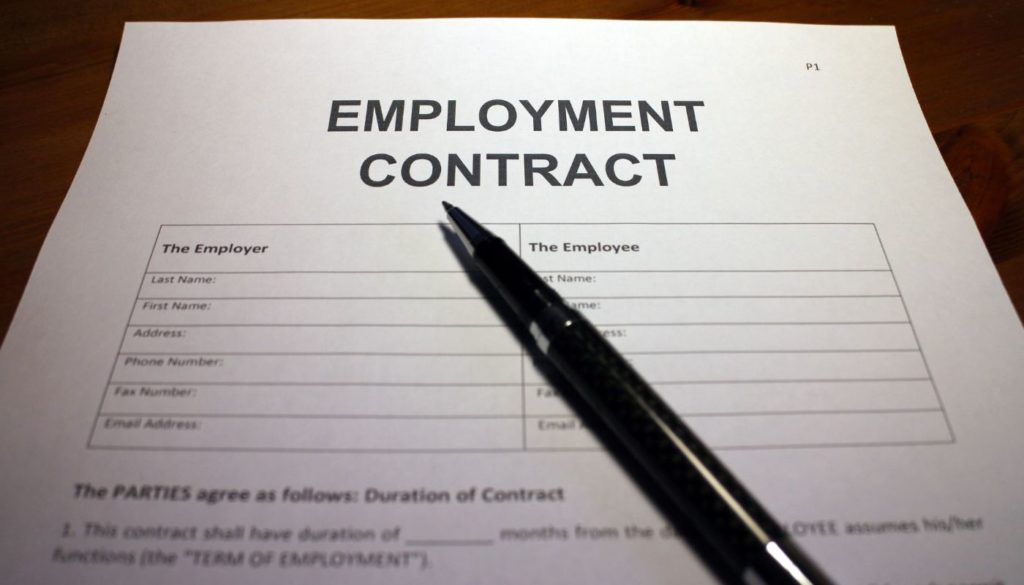We often get asked, what is the difference between a contractor and an employee? Well, Generally, workers in Australia are classified as either an ‘employee’ or a ‘contractor’ (or ‘independent contractor’). These categories have substantially different implications for the rights, entitlements, and obligations of each party in a workplace relationship (the worker and the employer).
Despite the crucial differences between the two, these terms are not well understood by both workers and employers and are often used interchangeably or incorrectly.
Mischaracterising a worker can have serious consequences.
For workers this might mean:
- Being incorrectly paid or missing out on benefits you are lawfully entitled to receive;
- Having fewer protections and less security at work; or
- Having less control than you are entitled to over your work; or
- Being prevented from working for certain employers or markets.
For businesses, the consequences can include:
- Being liable to backpay substantial underpayments or incur serious financial penalties;
- Having less control of your workers or being unable to direct how the work is performed; or
- Being liable for mistakes, improper work, or damage caused by the worker.
Employee or Contractor?
Unfortunately, there is no straight answer to this question under employment law. Generally, the distinction is the level of control the worker has.
Contractors tend to work for themselves and provide their services to others; they are their own boss.
Employees tend to work for someone else who controls how, when, and where they perform their work.
However, there is no single factor that determines whether a worker is an employee or a contractor and in practice the difference is rarely clear cut.
Previously, determining whether a worker is an employee or contractor involved looking beyond the terms of the contract and examining the actual relationship between the parties as a whole. This is known as the ‘multi-factor’ test. Under this test, the terms of contract are relevant but not definitive, and the substance of the relationship must be assessed. In other words, when considering the relationship in light of all of the circumstances does it look more like an employment or contractor arrangement.
However, the High Court in two recent cases – Construction, Forestry, Maritime, Mining and Energy Union v Personnel Contracting Pty Ltd [2022] HCA 1 and ZG Operations Australia Pty Ltd v Jamsek [2022] HCA 2 – held that where the parties have entered into a complete written contract, the terms of the contract are essential to the question of whether a worker is an employee or an independent contractor, and not the behaviour of the parties.
What this means in practice is that while parties may be able to rely on the terms of a written agreement with increased certainty, it is still necessary to ensure that the terms of the contract accurately characterise or reflect the nature of the relationship.
It does not necessarily follow that the label given to a worker in a written contract will be determinative of whether a worker is an employee or independent contractor, and other factors may still be important.
Other Factors in Determining the Difference Between Employee and Contractor?
Whether a worker is an independent contractor or an employee may depend on:
- The amount of control a worker has over how work is performed;
- Whether a worker has the ability to subcontractor delegate work or is required to perform the work personally;
- Who supplies the tools and equipment for work;
- Whether a worker has set hours of work or whether they can decide their hours;
- Who has responsibility for risk and liability for work or injury;
- How the worker is paid and when they are entitled to receive payment; and
- Whether a worker has an expectation of continuing work;
It is important to note that generally there is no one deciding factor. For example, just because a worker has an ABN, issues an invoice or has significant flexibility over their hours does not automatically mean that they are an independent contractor.
Conversely, the factors are not always equally weighted and not always counted.
It will depend on the individual circumstances of the relationship and the terms of the contract.
Sham Contracting
A sham arrangement occurs when an employer treats a worker as an independent contractor when in fact the worker is actually an employee. It is unlawful for employers to ask workers to enter into sham arrangements.
In many cases, sham arrangements are an attempt by employers to avoid paying employee entitlements, skirt obligations, or pass on certain risks to the worker. Often these arrangements are obviously nefarious; for example, threatening to dismiss a worker unless they sign a contract referring to them as a contractor.
But this is not always the case. Sometimes sham contracts occur inadvertently because the employer made incorrect assumptions about the arrangement or relied on poor advice.
Ignorance of the law, however, is not a defence and employers can still be held liable for sham arrangements even if this was not intended.
When to Seek Advice?
Prevention is better than a cure. Given the possible consequences, it is generally better to seek advice as early as possible in a working relationship.
For businesses and employees, if you are looking to hire new staff or considering engaging someone’s services consider what relationship is right before you commit. This is especially true if the business is growing (and thus expanding its workforce), or if you’re moving into a new market or jurisdiction.
For workers, if you are unsure about the arrangement it is generally harder, though not necessarily impossible, to deal with after you’ve agreed to the terms. If in doubt, tell your employer that you’ll need a reasonable period of time to consider the arrangement before agreeing. If they’re unwilling to provide you time to consider the offer, this is probably a red flag for the arrangement.
That said, all is not lost if you have entered into the wrong relationship. There may be ways to mitigate risk and safely manage transitioning workers if you think you may have incorrectly classified them as an employee or contractor and there may be ways to recover what you are owed if you’re missing entitlements.
Tom Howard Legal have a team of Sydney Employment Lawyers ready to answer any questions and help you with your situation. Get in contact with us now.



